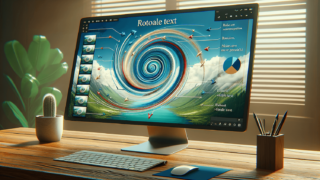
How to Use Slide Master in PowerPoint?
Written by: Bill Whitman
Last updated:

How to Use Slide Master in PowerPoint
To use the Slide Master in PowerPoint, follow these simple steps: Open your PowerPoint presentation, go to the View tab, click on Slide Master. From there, you can edit the master slides, which will affect the layout of all your slides. You can change the font, color, background, add or remove placeholders, and even insert your logo. Once you’re done, click Close Master View to return to your presentation. These changes will be applied to all your slides, ensuring consistency and saving you time.
Quick summary
- Open PowerPoint and navigate to the View tab to find Slide Master.
- Edit the master slides for universal changes.
- Adjust fonts, colors, backgrounds, and placeholders as needed.
- Ensure consistency across all slides by applying changes in Slide Master View.
- Close Master View to apply changes to the presentation.
Understanding the Importance of Slide Master
The Slide Master in PowerPoint is a powerful tool for creating consistent and professional-looking presentations. It allows you to make universal changes to your slides, saving you time and ensuring each slide matches your theme or brand. Using Slide Master effectively means you won’t have to manually adjust the fonts, colors, or backgrounds of each slide, providing a streamlined way to manage your presentation’s design.
Step-by-Step Guide to Using Slide Master
Finding Slide Master
The first step to using Slide Master is to open your PowerPoint presentation and go to the View tab on the Ribbon. Here, you’ll find the Slide Master button. Clicking this button will take you to the Slide Master view, where you’ll see the master slides that control the layout and design of your presentation slides.
Making Changes
Within Slide Master view, you can select any master slide and make changes. These changes could be adjusting the template layout, changing background designs, setting up font styles and sizes, and adding new placeholders for text, images, or other content. You can also insert elements that you want to appear on all slides, like logos or copyright information.
Saving and Applying Your Changes
After you’ve made your changes in Slide Master view, click Close Master View in the toolbar to return to the normal presentation view. Your changes will automatically be applied to all slides in your presentation, ensuring everything looks uniform and professional. If you need to make any further adjustments, you can always go back into Slide Master view and tweak as needed.
Tips for Using Slide Master Effectively
Here at LearnPowerpoint.io, our trusted advice includes a few tips to make the most out of Slide Master:
- Start with the Slide Master: Before you begin adding content to your slides, spend time setting up your Slide Master. This ensures that your presentation has a consistent look from the start.
- Less is More: Keep your master slides simple. Avoid overcrowding them with too much text or complex images. Simple and clean designs are easier for your audience to follow.
- Use Placeholders Wisely: Placeholders are your friends. Use them to define where text, images, and other content should go. This helps keep your slides organized and makes it easier when you’re adding content.
- Check Your Work: After making changes in Slide Master view, preview your slides in normal view to check that everything looks right. This can help you catch any inconsistencies and fix them before finalizing your presentation.
Conclusion
Understanding how to use Slide Master in PowerPoint can greatly improve the quality and consistency of your presentations. It saves time, ensures uniformity, and allows for easy updates across your entire slide deck. By following the steps outlined above and incorporating the tips from LearnPowerpoint.io, you’ll be well on your way to mastering Slide Master and creating more professional and polished presentations.
Featured Posts
- No pillar pages found.








